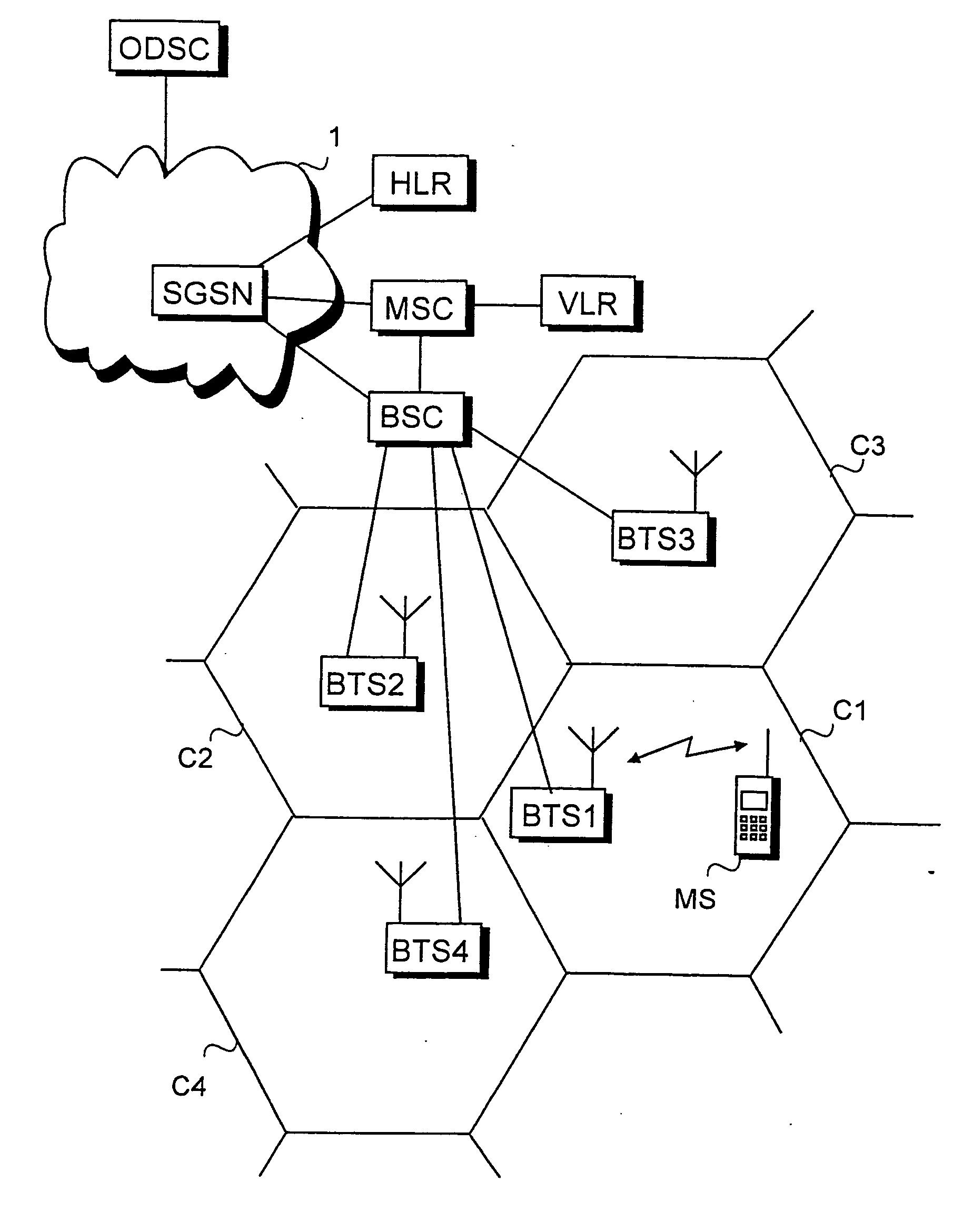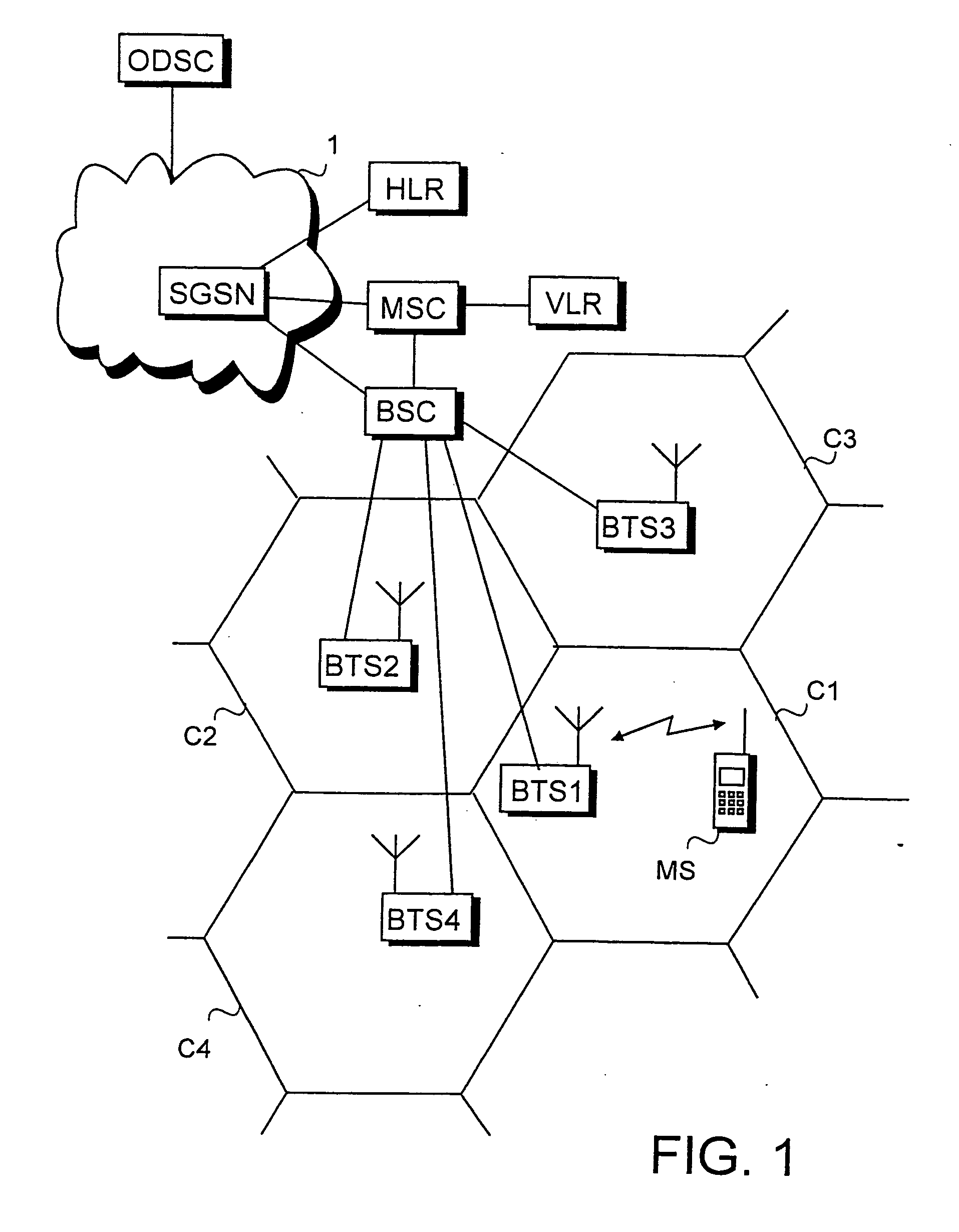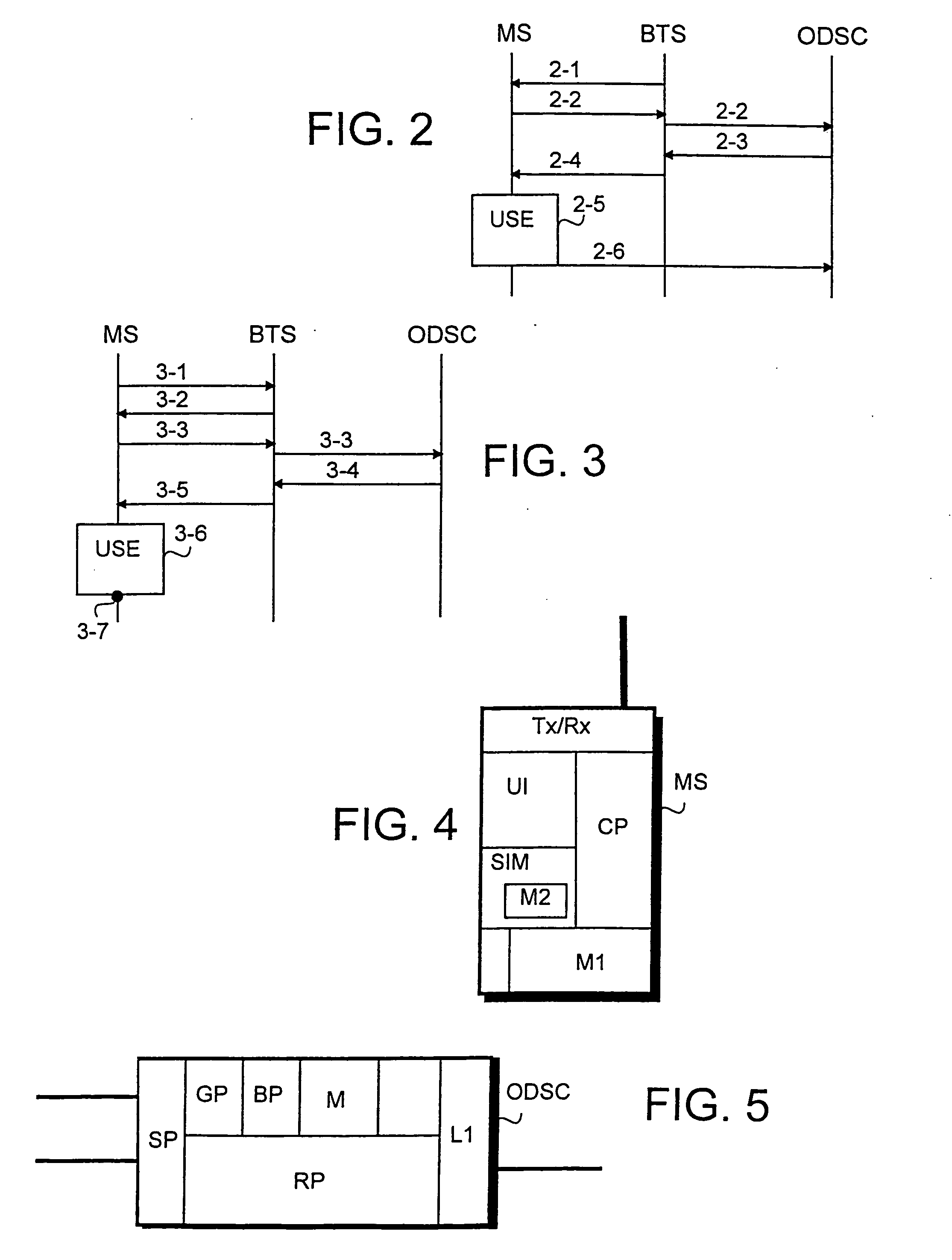Services on demand in mobile communications system
a mobile communication system and service technology, applied in the field of services, can solve the problems of burdening the network, inability to implement services-on-demand as such in mobile communication systems, and inconvenient transmission modes, so as to avoid unnecessary load on the system, save radio resources and network capacity, and cost-effective
- Summary
- Abstract
- Description
- Claims
- Application Information
AI Technical Summary
Benefits of technology
Problems solved by technology
Method used
Image
Examples
Embodiment Construction
[0022] The present invention can be applied in connection with any cellular mobile communication system, for example the third generation mobile communication system being developed, called the UTMS (Universal Mobile Telephone System). The invention is particularly well suited for being implemented in connection with packet data systems offering broadband data transfer. Such systems include the UTMS and the GPRS (General Packet Radio Service) for example, which is a new service for the GSM system and a subject matter of the GSM phase 2+standardization work in the ETSI (European Telecommunication Standard Institute). The GPRS service enables packet data transfer between mobile data terminal equipment and external data networks with the GSM network serving as an access network. The preferred embodiments of the invention will be described in the following by means of a GPRS packet radio network formed as a combination of a GPRS service and a GSM network, without restricting the inventi...
PUM
 Login to View More
Login to View More Abstract
Description
Claims
Application Information
 Login to View More
Login to View More - R&D
- Intellectual Property
- Life Sciences
- Materials
- Tech Scout
- Unparalleled Data Quality
- Higher Quality Content
- 60% Fewer Hallucinations
Browse by: Latest US Patents, China's latest patents, Technical Efficacy Thesaurus, Application Domain, Technology Topic, Popular Technical Reports.
© 2025 PatSnap. All rights reserved.Legal|Privacy policy|Modern Slavery Act Transparency Statement|Sitemap|About US| Contact US: help@patsnap.com



